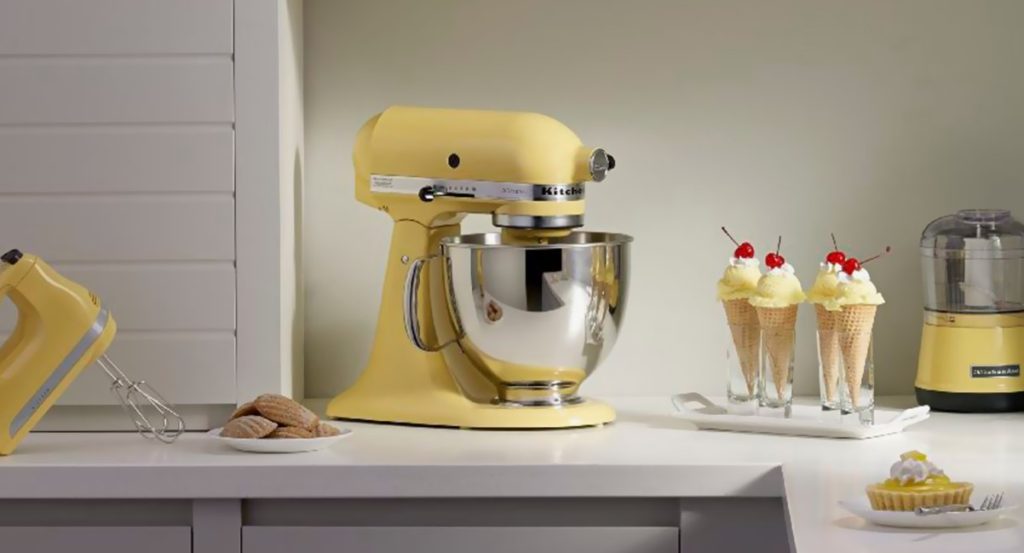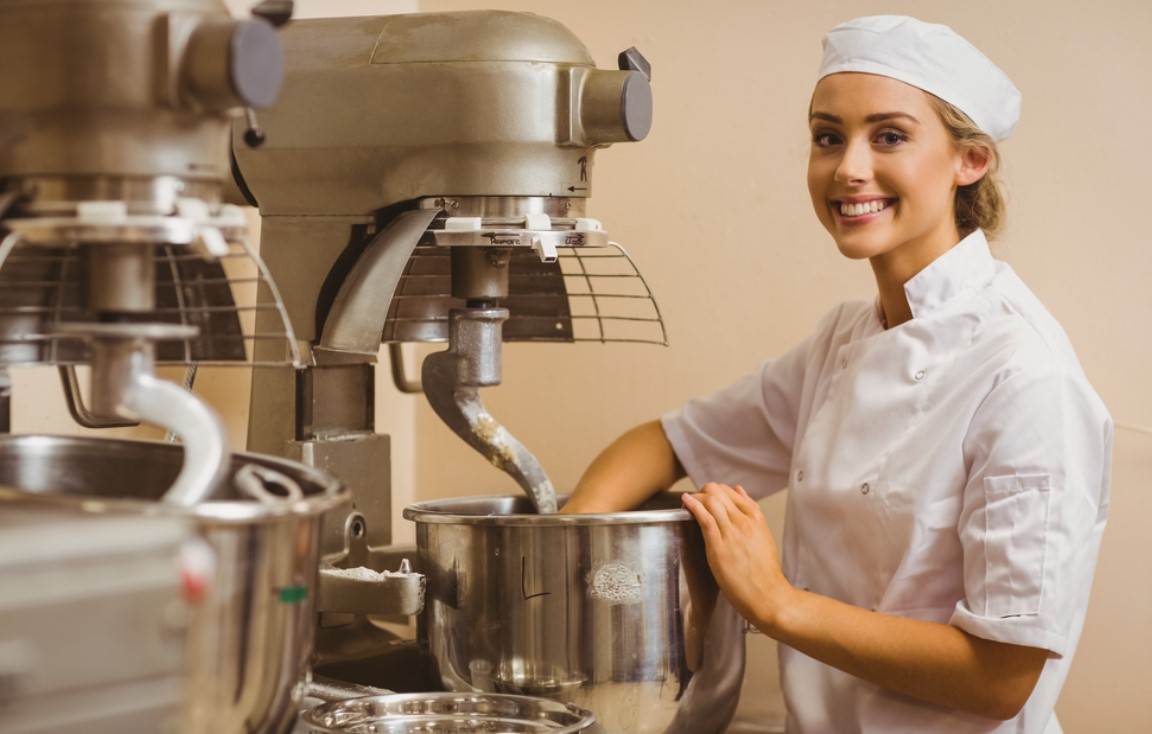The history of bakery mixers is a tale of technological innovation and the relentless pursuit of efficiency. From the humble hand-crank models of the past to today’s sophisticated, automated machines, bakery mixers have undergone a significant transformation. This evolution not only reflects advancements in engineering but also changing consumer demands and industry standards.
Early Days: The Hand-Crank Era
In the early days of baking, all mixing was done manually. This labor-intensive process was not only time-consuming but also required considerable physical effort. The first significant leap came with the introduction of hand-crank mixers in the late 19th century. These devices, though rudimentary, allowed bakers to mix ingredients more efficiently than with a spoon or whisk.
Hand-crank mixers typically featured a bowl and a set of beaters operated by turning a crank. This simple mechanism increased the speed and consistency of mixing, which was a game-changer for both home and professional bakers. However, the physical effort required to operate these mixers remained a limiting factor.
The Advent of Electric Mixers
The early 20th century marked the beginning of the electric age in baking. The introduction of electric motors to mixers revolutionized the industry. In 1919, KitchenAid launched its first stand mixer, which quickly became a staple in both home and commercial kitchens. These early electric mixers were powerful and reliable, significantly reducing the time and effort needed for mixing.
Electric mixers brought several advantages. They provided consistent power, which improved the texture and quality of baked goods. Additionally, the introduction of multiple speed settings allowed for greater control over the mixing process. This innovation paved the way for more complex recipes and a wider variety of baked goods.

Technological Innovations in the Mid-20th Century
As technology advanced, so did the features of bakery mixers. The mid-20th century saw the introduction of planetary mixing action, which ensured that the beaters touched every part of the bowl. This development further improved the consistency and quality of mixes. Brands like Hobart and Sunbeam led the market with their durable and versatile mixers.
Another significant advancement was the development of interchangeable attachments. These attachments expanded the functionality of mixers beyond just mixing. Bakers could now knead dough, whip cream, and even grind meat with a single machine. This versatility made electric mixers an indispensable tool in both home and commercial kitchens.
The Digital Age: Smart Mixers
The late 20th and early 21st centuries brought about the digital revolution, which had a profound impact on bakery mixers. Modern mixers now feature digital controls, programmable settings, and even connectivity to smart devices. These high-tech mixers offer unprecedented precision and convenience.
Digital controls allow bakers to set exact mixing times and speeds, ensuring consistent results every time. Programmable settings make it easy to replicate complex recipes with minimal effort. Some high-end models even come with sensors that adjust speed and power based on the consistency of the mixture, further improving the quality of the final product.
Smart mixers can be connected to apps and smart home systems, allowing bakers to control their mixers remotely. This connectivity also provides access to a wealth of recipes and tutorials, making it easier for both novice and experienced bakers to explore new techniques and recipes.
Energy Efficiency and Sustainability
In recent years, there has been a growing focus on energy efficiency and sustainability in the design of bakery mixers. Manufacturers are now using more energy-efficient motors and materials, reducing the environmental impact of these machines. Some mixers are designed to use less electricity while still providing the same level of performance, which can lead to significant cost savings for commercial bakeries.
Sustainable materials are also being used more frequently. Stainless steel, for example, is not only durable but also recyclable. Additionally, some manufacturers are exploring the use of biodegradable plastics and other eco-friendly materials in their products. This shift towards sustainability is driven by both consumer demand and regulatory pressures.

The Role of Bakery Mixers in Dubai and the UAE
Dubai and the UAE have a rich culinary heritage that includes a variety of baked goods. From traditional Arabic pastries to contemporary international treats, the demand for high-quality baked goods is ever-growing. This has led to a thriving bakery industry, which in turn drives the need for advanced bakery equipment.
In the UAE, the bakery industry is highly competitive, with businesses constantly seeking ways to improve efficiency and product quality. High-tech bakery mixers play a crucial role in this pursuit. These machines allow bakeries to produce large quantities of consistent, high-quality products quickly and efficiently.
Furthermore, the UAE government’s focus on sustainability aligns with the global trend towards more eco-friendly bakery mixers. Initiatives such as the UAE Energy Strategy 2050 aim to reduce the carbon footprint of various industries, including food production. By adopting an energy-efficient bakery mixer machine, businesses in the UAE can contribute to these sustainability goals while also benefiting from reduced operational costs.
The Impact of Automation
Automation is another significant trend in the evolution of bakery mixers. Automated mixers can handle large batches with minimal human intervention, making them ideal for commercial bakeries. These machines can mix, knead, and even portion dough automatically, increasing efficiency and reducing labor costs.
In Dubai, where the bakery market is growing rapidly, automation can help businesses meet high demand without compromising on quality. Automated mixers ensure that each batch of dough is mixed to the same specifications, which is crucial for maintaining consistency in large-scale production. This consistency is particularly important in a market where customer expectations are high.
The Future of Bakery Mixers
Looking ahead, the future of bakery mixers is likely to be shaped by further advancements in technology and sustainability. We can expect to see even more sophisticated digital controls, enhanced automation, and greater connectivity with other kitchen devices. Additionally, the use of artificial intelligence (AI) and machine learning could lead to smarter mixers that can adapt to different recipes and ingredients in real-time.
In terms of sustainability, future mixers will likely incorporate more eco-friendly materials and energy-efficient technologies. As consumers and regulators continue to prioritize sustainability, manufacturers will need to innovate to meet these demands.
Conclusion
The evolution of bakery mixers from hand-crank models to high-tech machines is a testament to the ongoing quest for efficiency and quality in baking. Each advancement has brought new capabilities and improvements, transforming the way we mix ingredients and bake goods. In Dubai and the UAE, where the bakery industry is thriving, high-tech mixers are essential for meeting the demands of a diverse and growing market. As technology continues to advance, we can look forward to even more innovations that will further enhance the capabilities of bakery mixers.

Skydiver, maker, audiophile, Vignelli fan and TDC honorary member. Working at the nexus of simplicity and mathematics to craft experiences both online and in real life. I sometimes make random things with friends.
